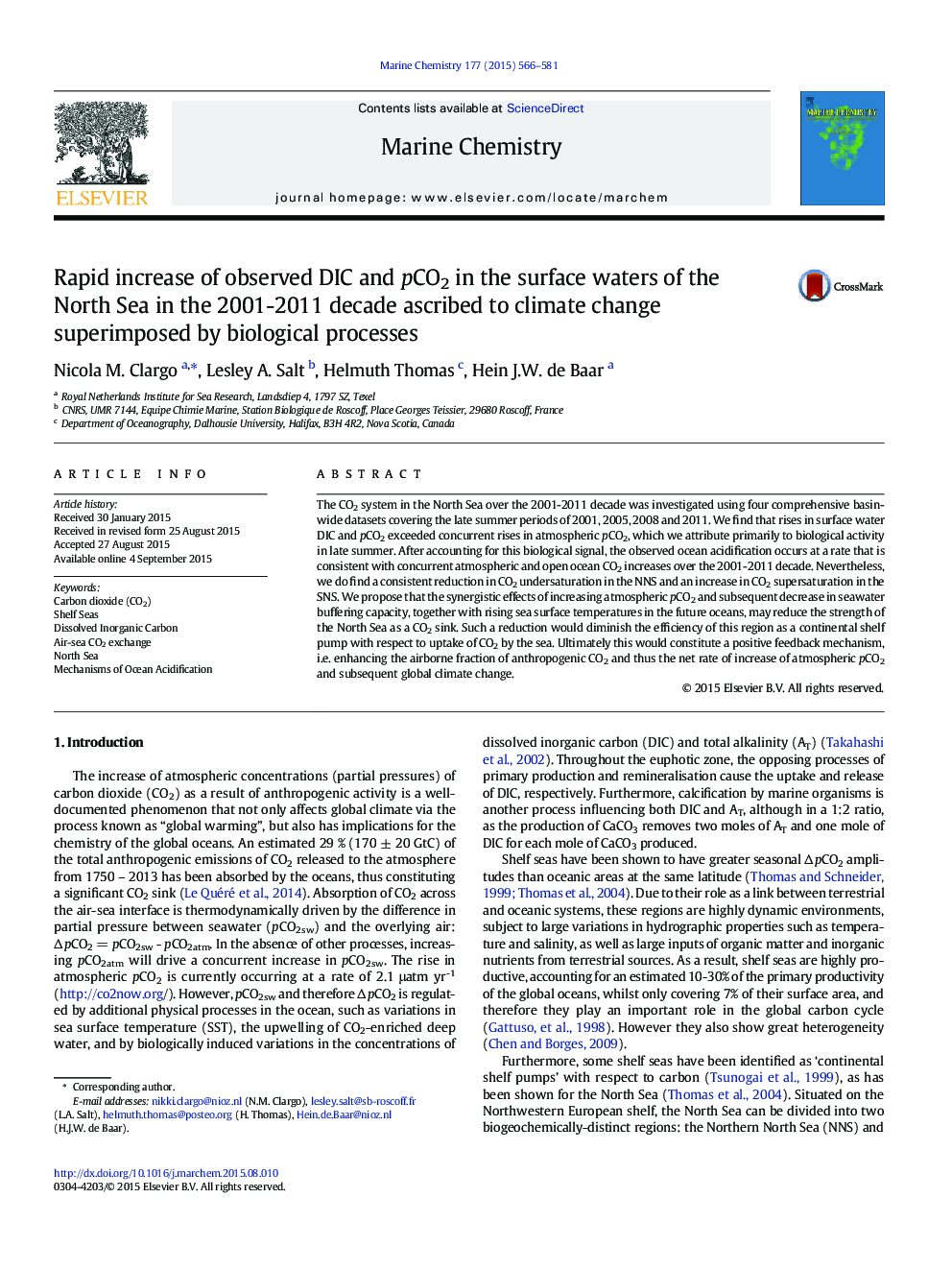| Article ID | Journal | Published Year | Pages | File Type |
|---|---|---|---|---|
| 1262724 | Marine Chemistry | 2015 | 16 Pages |
•We observed large increases in surface DIC and pCO2 in the North Sea from 01-11•This is largely due to biological activity superimposed on the anthropogenic signal•We find a reduction in CO2 undersaturation in the Northern North Sea and an increase in CO2 supersaturation in the Southern North Sea•This may affect the efficiency of the North Sea continental shelf pump
The CO2 system in the North Sea over the 2001-2011 decade was investigated using four comprehensive basin-wide datasets covering the late summer periods of 2001, 2005, 2008 and 2011. We find that rises in surface water DIC and pCO2 exceeded concurrent rises in atmospheric pCO2, which we attribute primarily to biological activity in late summer. After accounting for this biological signal, the observed ocean acidification occurs at a rate that is consistent with concurrent atmospheric and open ocean CO2 increases over the 2001-2011 decade. Nevertheless, we do find a consistent reduction in CO2 undersaturation in the NNS and an increase in CO2 supersaturation in the SNS. We propose that the synergistic effects of increasing atmospheric pCO2 and subsequent decrease in seawater buffering capacity, together with rising sea surface temperatures in the future oceans, may reduce the strength of the North Sea as a CO2 sink. Such a reduction would diminish the efficiency of this region as a continental shelf pump with respect to uptake of CO2 by the sea. Ultimately this would constitute a positive feedback mechanism, i.e. enhancing the airborne fraction of anthropogenic CO2 and thus the net rate of increase of atmospheric pCO2 and subsequent global climate change.
